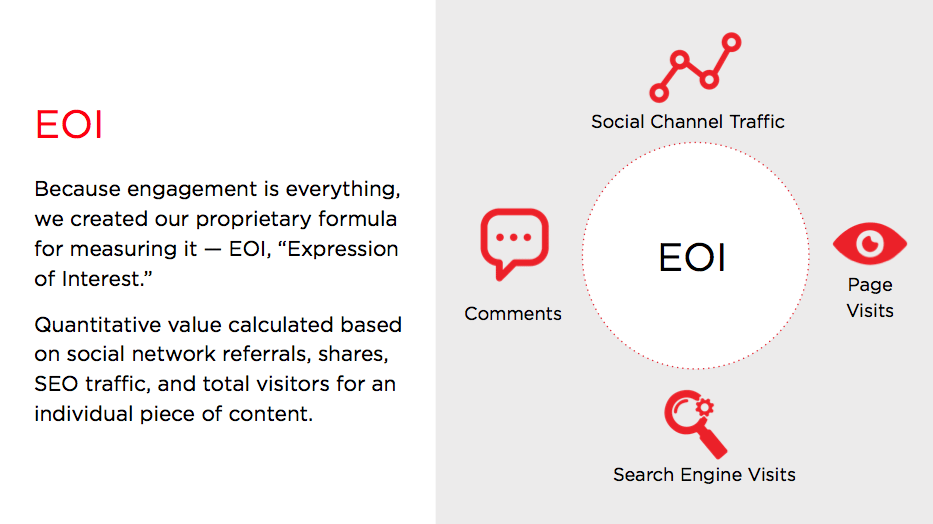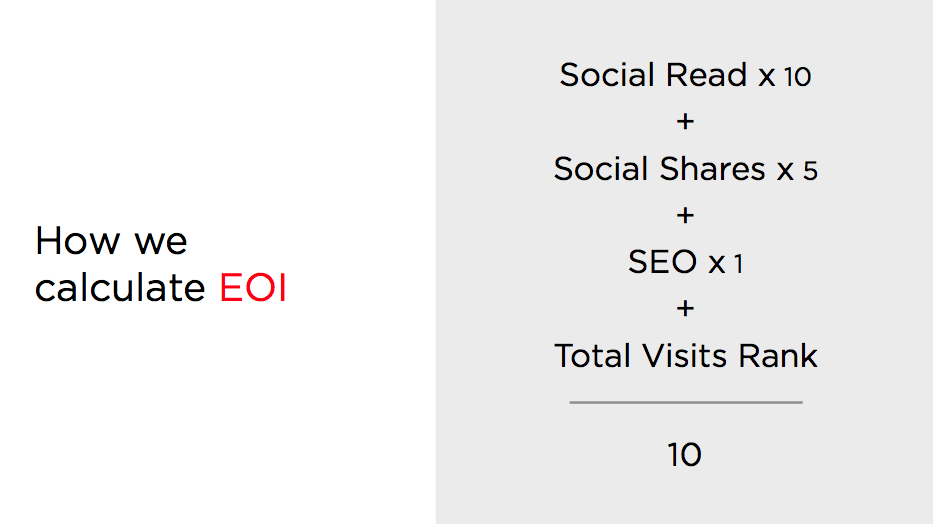

Taking a cue from the social media model of two-way, authentic communication, The Coca-Cola Company upended the traditional model of a brand website with the introduction of Coca-Cola Journey. The platform serves as a digital destination for Coca-Cola consumers and a variety of audiences including partners, investors, journalists and yes, even critics.
At the time, 2012, this was a new concept in digital brand journalism. It filled a gap in how the company was communicating with its publics by connecting brand personality with entertaining, powerful storytelling. It has allowed Coca-Cola to communicate with consumers, journalists, employees and stakeholders in a more engaging way. Audiences engage with the brand through user-generated content and more peer-to-peer interactions.
After unveiling Coca-Cola Journey, the team realized the traditional metrics for tracking content success were inadequate for such an integrated communications platform. The team analyzed its content strategy and goals, developing a clearer view of exactly what kind of results it hoped to measure.
The result of that exercise was Expression of Interest (EOI), a proprietary measurement formula designed for custom-tracking content performance.
By understanding the need for such a formula and taking a deep dive into goals and tracking needs, other brands can implement their a customized tracking tool to measure what truly matters within their communications strategy.
a brand platform with Editorial tone
Coca-Cola Journey was designed to serve as a corporate communications platform with an editorial persona. A curated mix of branded and non-branded content, consumer-relevant articles make up the heart of the website. Journey acts as a daily digital news magazine, delivering stories across multiple categories to 40 countries and in 20 languages.
Three Cs drive the platform’s strategy: Content, Coordinated and Current. We believe quality, first-class Content is instrumental in the success of Journey. This content is Coordinatedthrough seamless, connected interactions, staying true to the company’s key messages and providing a fresh glimpse into brand-adjacent, Current topics.
This formula allows Journey to operate as an editorial publication, with checks and balances for what constitutes quality, balanced stories.
The Journey team, consisting of an editor-in-chief, two content editors, a social media editor, analytics strategist, graphic designer and content analyst, sit together multiple times each week to plan content and ensure each of their topic focus areas is well represented.
The team tells stories about food, culture, arts, business, sports, innovation and history. With the help of local, Atlanta-based freelancers, it also tells objective, non-branded stories through the medium of videography.
The Results
This methodology has resulted in nearly 5,000 articles and 52,000 total pieces of content on the Journey website. On average, the site sees 1.5 million monthly visitors who read 3.6 million articles each month, spending about 2.5 minutes per essay. These stats were remarkable to the Journey team, considering 33% of website visitors spend fewer than 15 seconds reading articles.
Upon analyzing these results, the Journey team realized what it was looking at was an apples-and-oranges scenario. The traditional approach being used to measure success—silos of page views, unique visitors and time spent on page—were telling part of the story only.
The team believed Journey is more than a corporate message machine. It is, the team felt, a conduit for humanizing the brand and ensuring consumers have a place to discover more about the world around them through editorially driven information. All this meant a new design was necessary for analyzing successes.
The Journey team developed a strategy to focus less on driving eyeballs, but rather on engagement. To the Journey team, traditional web metrics matter but the true measure of success is whether or not a reader has engaged.
Developing a Proprietary Metric
The proprietary Expressions of Interest (EOI) score was developed as a response (see graphic below and sidebar at the bottom of this article). EOI measures the organic reach and engagement of each piece of content published on the site. The score is calculated by weighting quantitative values based on referrals from social networks, social shares, SEO traffic and total visitors for an individual piece.


This metrics cocktail paints a truer picture for the Journey team of stories that are connecting with readers in a powerful way. Bounce rate and page views also are considered on a topical level to gauge reader interest in particular content categories.
EOI metrics are weighted based on net effect and scaled to be viewed as overall impact on the brand for individual pieces of content. By viewing measurements through the lens of brand-applicable metrics, the Journey team is able to assess the true, comparatively relevant impact on the brand. Social referrals are weighted with a multiple of 10, social shares with a multiple of five and SEO as a singular unit. These tallies are added together and included with a total visits rank to determine the content’s EOI score.
This custom amalgamation of metrics clarifies and streamlines the content measurement process for the Journey team. A weekly ranking of content is compiled and contrasted against the Journey Three Cs strategy to ensure consistency and quality content.
Since a metrics formula is simply a tool to measure any given parameters, other brands can develop a custom metrics system by analyzing critical metrics and building a formula to consistently and clearly track valuable change.
A custom metrics system can help brand managers and communicators take control of how impact is evaluated by clearing the clutter of non-cohesive metrics that may not have a true influence on communication goals.
Start by taking a hard look at content goals. Why is your brand publishing content, and who is it that you want to reach? Determine the influence you want your publications to have on the brand overall and let that serve as a periscope for assembling relevant metrics.
Next, review your content strategy to determine the type of content being generated by the brand and how that information is published. This can include everything from longer-form blog content to videos, social graphics and company news pieces.
Know The Metrics That Matter to You
Then look at the metrics that are important to each type of content and its distribution channel. If your goal is to have a high number of eyes on your content, views may be important. If your goal is to increase brand exposure among your consumer-adjacent audience, social shares and referrals may be on the list you create.
Weight the selected metrics based on your content strategy. What is more important for your brand to measure, SEO impact or social impact? To get a bigger picture of outbound, SEO may be analyzed; to see your online community engagement growth, social shares may need to be weighted heavier.
Use this weighting approach to develop a scale that can be used repeatedly to ensure results that can be compared and contrasted across topics, time frames and content pieces in an objective manner.
It is advisable for any initiative to set up a beta test period. I’d recommend you do that for your metrics formula. This will help you implement the analysis in a real-world environment and work out any kinks.
Finally, educate your entire team on how the formula works and why it’s important to assessing the true impact of brand communications.
CONTACT: [email protected]
Editor’s Note:Doug Busk will be speaking at PR News’ Social Shake-Up, May 22-24, in Atlanta. He’s also on the event’s advisory board. For more information: http://www.socialshakeupshow.com/
10 Steps to Creating a Metrics Formula For Your Brand
- Review content goals, keeping key audiences and brand impact top of mind.
- Evaluate content strategy to determine the type of content your brand is producing and how it’s being shared and consumed.
- Look at the metrics important to each type of content. Make a list of all the metrics and rank them, allowing the most important for your strategy to emerge.
- Weight the most important metrics based on your content goals and strategy.
- Develop a scale that is used repeatedly to produce streamlined, objective measurements.
- Set a beta test period for working out kinks in your process and adjusting as necessary.
- Educate your team on how the system works to ensure a streamlined implementation for consistent measurement.
- Implement by regularly processing content through the measurement scale to gain a clear picture of results.
- Analyze results by comparing pieces of content and determining what topics, channels and communication tactics connect more effectively with your audiences.
- Optimize your strategy by allowing results to feed back into your content strategy and goals.
